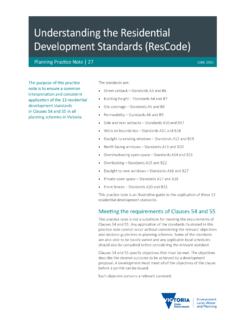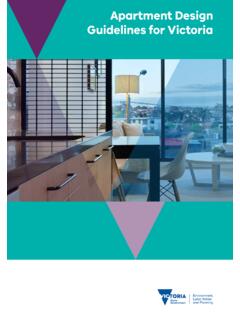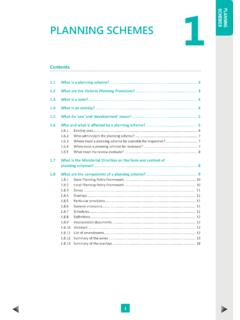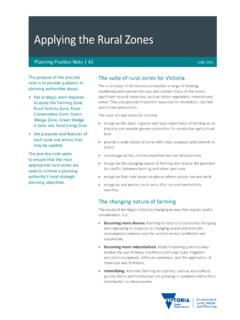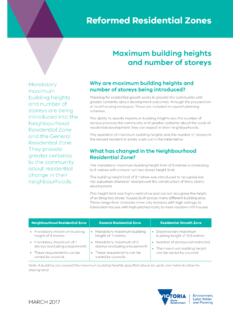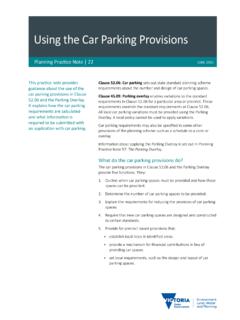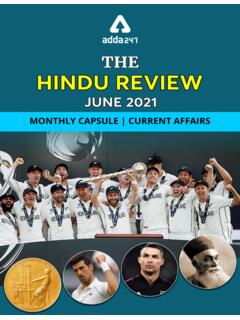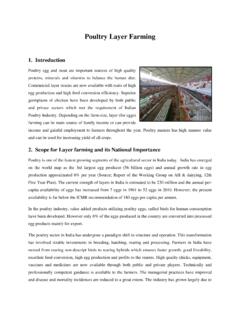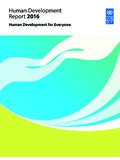Transcription of Sense of Place: urban design principles for the ...
1 Sense of Place: urban design principlesfor the metropolitan strategyTechnical Report 12 PLANNING MELBOURNE FOR THE 21ST CENTURYM essage from the MinistersBy world standards Melbourne is a great city. The Bracks Government is committed to maintainingMelbourne s reputation as a liveable city and an attractive investment destination. The Government hasdeveloped a Metropolitan Strategy to set a clear vision for Melbourne s future liveability and prosperityand, importantly, its long-term preparation of the Metropolitan Strategy has drawn on inputs from a wide range of sources. It isvital that the strategy has a sound research and information basis. It is also especially vital thatcommunity aspirations for the city s future be well understood.
2 The key inputs to the strategy, therefore,include both a wide ranging public consultation program as well as a series of research or technicalpapers on issues that may have an impact on Melbourne s Bracks Government has given an undertaking to make as much of this background information aspossible widely available to stimulate discussion about the future of report is one of the technical reports commissioned by the Department of Infrastructure (DOI),which we hope will stimulate feedback. Its content and recommendations are the views of its authorsand not necessarily the views of the encourage you to read this and the other technical reports and, should you wish, to make your viewsknown about the future of Melbourne by:Telephone: 1800 191 write to:Metropolitan Strategy ProjectGPO Box 2797 YMelbourne 3001 Mary Delahunty MPPeter Batchelor MPMinister for PlanningMinister for TransportThis technical report entitled, Sense of place : urban design principles for the metropolitan strategy,October 2002, hasbeen prepared by Planisphere for the Department of of this technical report is also available.
3 For a copy of this summary or for information on other technicalreports and summaries, please visit the project web site at or telephone 1800 191 of the technical reports or their summaries are available for perusal at the Department of Infrastructure libraryand all Victorian municipal and university libraries. A copy of each report may be purchased from the InformationVictoria Bookshop located at 365 Collins Street, Melbourne. Price $ (inc GST).ISBN 0 7311 8741 5 PROJECT TEAMP lanisphere288 Brunswick StreetFitzroy Victoria 3065 Mike Scott, project manager and main authorJulia Niemann, strategic planning assistantLisa Riddle, implementation adviserSub-consultants:John Curtis Pty Ltd117A Flemington RoadNorth Melbourne Victoria 3051 John Curtis, urban designer and main team memberCity ProjectsCity of Melbourne5th floor 225 Bourke StreetMelbourne 3000 Rob Adams, case studies and initial input to contentsChris Peck, case study presentationDepartment of InfrastructureDora Kouremenos, contributor to workshopsLarysa Ischenko assisted with the early stages of the projectJai YianniGraphic DesignAcknowledgmentsSally Vivian, Steve Thorne, Jim Papadimetriou, RudyKohut.
4 Cathy Wilkinson and other members of theMetropolitan Strategy teamUrban designers who attended the Department ofInfrastructure workshop on urban design input to theMetropolitan Strategy, in November 2001 Geoff Falk, for the before and after sketches of a typical activity centreFOREWORDIn November 2000 I facilitated a workshop for theMetropolitan Strategy team, attended by many of theleading urban designers in Victoria. The purpose of theworkshop was to scope the kinds of urban design issuesthat should be addressed in the Metropolitan workshop was a success. Many ideas werepresented about a design agenda for the Strategy, andthere was widespread enthusiasm for taking these issuesfurther.
5 Perhaps the single most important message was:Make sure the strategy includes urban design as afundamental, not as an add-on once the major policieshave been arrived at. Just over a year since that workshop, Planisphere wascommissioned to prepare a report on the urban designagenda for the Metropolitan Strategy. This is indeed aprivileged commission, and one that carries the challengeof meeting the expectations of urban designersthroughout the state. We hope very much that at leastsome of these expectations are fulfilled by this report. The work has been undertaken over a very short periodof time, and during the Christmas-January period whenmany practitioners are on holiday.
6 For this reason, theteam has had to work without the benefit of workshoppingthe ideas with other practitioners. Considerable use hasbeen made of secondary sources in some chapters, andthese have tended to be those readily at hand; therewasn t time to conduct wider research. Illustrations havebeen taken from existing (mainly government) would love to have had the time and budget to takephotographs specifically for this project. We see this report as setting out a detailed andchallenging agenda of principles that should govern thecontinuing evolution of the central region s urbanstructure. We hope that many urban designers, planningand development industry professionals, communitymembers, politicians and others, will have the opportunityto be involved in refining and implementing them.
7 Here isa framework to start from. We hope a wide cross-sectionof professional and community groups can be involved inrefining, developing and implementing it. Mike ScottPlanisphereFebruary 2002iiiINTRODUCTIONS ense of Place: urban design principles for the metropolitan strategyCONTENTSINTRODUCTION101 urban design AND Sense OF place 902 LANDSCAPE CHARACTER 1703 TOWNS AND CITIES IN THE CENTRAL REGION 3504 THE MELBOURNE METROPOLIS4505 ACTIVITY CENTRES 5906 RESIDENTIAL AREAS AND NEIGHBOURHOODCHARACTER 8007 TRANSPORT CORRIDORS9108 DEVELOPMENTOF NEW COMMUNITIES 101 APPENDICES 109 INTRODUCTIONEXECUTIVE SUMMARY01 urban design and Sense of PlaceWHY ARE urban design AND Sense OFPLACE IMPORTANT?
8 urban design is one of the principal means available toensure that future urban environments maintain a senseof place . (Technical Report 9, Culture and the Metropolis,expresses well the significance to people in thecommunity of Sense of place .) This report suggests howsense of place can be better reflected in planning policiesin the Metropolitan Strategy. It also suggests how theapplication of sound principles of urban design canprovide better quality, more functional and moresustainable urban development in the study area. WHAT SHOULD THE METROPOLITANSTRATEGY SAY?The Metropolitan Strategy should include principles for strengthening the characteristics that differentiate a particular local environment or place , as follows:>Respond to and reveal, express or highlight the following aspects of the area:Underlying (natural) landscape characterCultural heritageValued existing built form context>Respond to or express the values, needs and aspirationsof groups in the community for whom the place is beingdesigned, and make it welcoming to them>Assist in making the area more legible (easy to find your way around in)>Provide opportunities for individual and community expression and identityWHAT SHOULD HAPPEN NEXT?
9 1. urban design should be treated as an integral and fundamental component of future stages in the development of the Metropolitan Strategy 2. The Sense of place principles contained in the followingchapters of the report, relating to landscape character, urban and neighbourhood character, activity centres, transportcorridors and development of new communities, should berefined and elaborated into firm implementation programs02 Landscape CharacterWHY IS LANDSCAPE CHARACTER IMPORTANT?The Central Victoria region comprises a large number ofdistinct landscape character types. Many of theselandscapetypes intersect in the Melbourne metropolitanarea, and most parts of the region are located close tothe border of at least two types of landscape.
10 Residentsof the region therefore have access to a wide range ofscenic environments for living, working and recreation. At the same time, the underlying landscape character ofan area is fundamental to its Sense of place , even wheresubstantial urban development has occurred. Futuredevelopment should therefore assist with expressing thecharacter of these different landscape types. The waysthis can occur are outlined in this chapter. WHAT SHOULD THE METROPOLITANSTRATEGY SAY?The Metropolitan Strategy should make reference to theimportance of landscape character and use the map andprinciples to underpin its development related the map of character types and suitable photoswould help to give the document a greater Sense of place .
